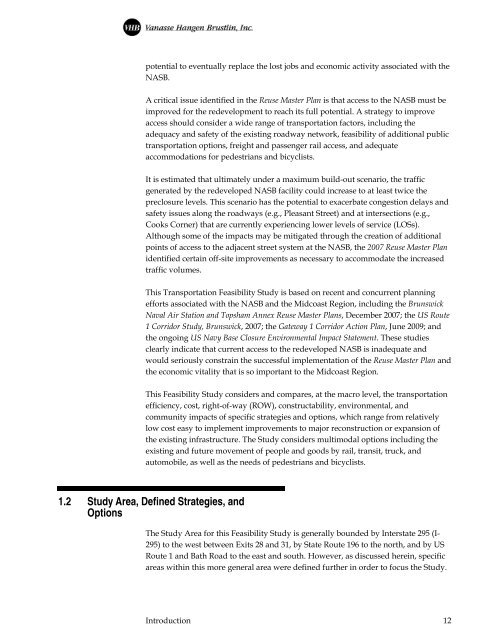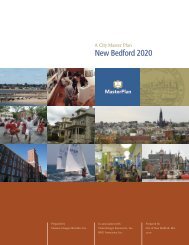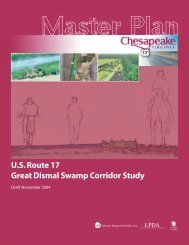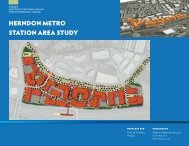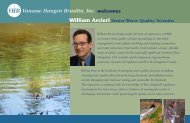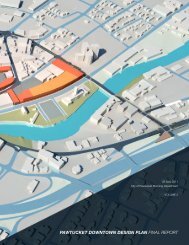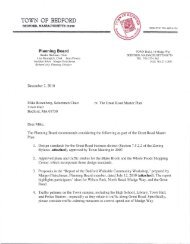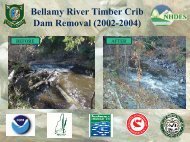Final Report - VHB.com
Final Report - VHB.com
Final Report - VHB.com
You also want an ePaper? Increase the reach of your titles
YUMPU automatically turns print PDFs into web optimized ePapers that Google loves.
potential to eventually replace the lost jobs and economic activity associated with the<br />
NASB.<br />
A critical issue identified in the Reuse Master Plan is that access to the NASB must be<br />
improved for the redevelopment to reach its full potential. A strategy to improve<br />
access should consider a wide range of transportation factors, including the<br />
adequacy and safety of the existing roadway network, feasibility of additional public<br />
transportation options, freight and passenger rail access, and adequate<br />
ac<strong>com</strong>modations for pedestrians and bicyclists.<br />
It is estimated that ultimately under a maximum build-out scenario, the traffic<br />
generated by the redeveloped NASB facility could increase to at least twice the<br />
preclosure levels. This scenario has the potential to exacerbate congestion delays and<br />
safety issues along the roadways (e.g., Pleasant Street) and at intersections (e.g.,<br />
Cooks Corner) that are currently experiencing lower levels of service (LOSs).<br />
Although some of the impacts may be mitigated through the creation of additional<br />
points of access to the adjacent street system at the NASB, the 2007 Reuse Master Plan<br />
identified certain off-site improvements as necessary to ac<strong>com</strong>modate the increased<br />
traffic volumes.<br />
This Transportation Feasibility Study is based on recent and concurrent planning<br />
efforts associated with the NASB and the Midcoast Region, including the Brunswick<br />
Naval Air Station and Topsham Annex Reuse Master Plans, December 2007; the US Route<br />
1 Corridor Study, Brunswick, 2007; the Gateway 1 Corridor Action Plan, June 2009; and<br />
the ongoing US Navy Base Closure Environmental Impact Statement. These studies<br />
clearly indicate that current access to the redeveloped NASB is inadequate and<br />
would seriously constrain the successful implementation of the Reuse Master Plan and<br />
the economic vitality that is so important to the Midcoast Region.<br />
This Feasibility Study considers and <strong>com</strong>pares, at the macro level, the transportation<br />
efficiency, cost, right-of-way (ROW), constructability, environmental, and<br />
<strong>com</strong>munity impacts of specific strategies and options, which range from relatively<br />
low cost easy to implement improvements to major reconstruction or expansion of<br />
the existing infrastructure. The Study considers multimodal options including the<br />
existing and future movement of people and goods by rail, transit, truck, and<br />
automobile, as well as the needs of pedestrians and bicyclists.<br />
1.2 Study Area, Defined Strategies, and<br />
Options<br />
The Study Area for this Feasibility Study is generally bounded by Interstate 295 (I-<br />
295) to the west between Exits 28 and 31, by State Route 196 to the north, and by US<br />
Route 1 and Bath Road to the east and south. However, as discussed herein, specific<br />
areas within this more general area were defined further in order to focus the Study.<br />
Introduction 12


